LENIN AT 150: LENIN LIVES!
The editors of PRISM are posting this paper by Prof. Jose Ma. Sison about V.I. Lenin’s 150th birth anniversary, one week before the actual birthday of the great Marxist revolutionary thinker, leader and author. We offer it to all our readers as part of our contribution to the expected worldwide commemoration of his birth, life and work and historic legacy. Many socialist and anti-imperialist parties and groups are likewise marking that date with their own activities, which might be reduced in terms of physical scale because of the ongoing Covid-19 pandemic but certainly maintaining high levels of militance and confidence about the forward movement of the struggles of the proletariat and peoples throughout the world.
LENIN AT 150: LENIN LIVES!
In Celebration of the 150th birth anniversary of V.I. Lenin on April 22, 2020
By Jose Maria Sison
Chairperson Emeritus, International League of Peoples’ Struggle
Dear Comrades and Friends,
I thank the International League of Peoples’ Struggle for inviting me to keynote the event titled, “Lenin at 150: Lenin Lives!”, to commemorate the 150th birth anniversary of Vladimir Ilyich Ulyanov, or V.I. Lenin in Amsterdam on March 28. But the event has been aborted due to the rule of safe distancing, travel restrictions and other disruptions consequent to the Covid-19 pandemic.
The soonest and most appropriate alternative for me is to publish my paper on April 22, Lenin’s date of birth. I have also proposed to the organizers of the event to publish the other commemorative papers in a timely manner. All the papers can be collected and published as a book and launched in a gathering of the authors and their readers at the appropriate time.
The pandemic is regrettable but serves us well as a subject for study in connection with Lenin’s teachings on imperialism and the proletarian revolution. It coincides with, exposes further and aggravates the rapidly worsening crisis of the ruling system. It underscores the total bankruptcy of unbridled private greed under neoliberalism against the public good.
Even before the pandemic occurred, the world capitalist system was already on the verge of a big financial and economic crash. The indicators were the unsustainable debts of households, corporations and central banks, the overaccumulation and inflation of assets in the hands of the monopoly bourgeoisie, the depression of production and wage incomes and the increasing austerity measures adopted on a world scale.
The pandemic has considerably contributed to the worsening of the crisis of the world capitalist system. And it has exposed how the neoliberal economic policy has escalated the exploitation of the working people, how it has deprived them of sufficient public health systems by eroding these with privatization and how it has led to repressive measures and further loss of income and social services during a severe health crisis.
The forces of fascism are also using the pandemic, general lockdowns and business disruptions as pretext to take center stage, push for and impose emergency powers and military takeovers of civilian functions, heighten repressive measures and jostle for diminishing resources, thus creating a more explosive mix that could lead to more violent inter-imperialist rivalries and internal political wrangling among ruling class factions.
But the increasingly intolerable conditions of oppression and exploitation drive the proletariat and the broad masses of the people to wage the revolutionary struggle against imperialism and all reaction. In most countries affected by the pandemic, daily difficulties of the people in coping with the fast-developing health crisis, socio-economic crisis, bureaucratic venalities and repression, and ruling-class rivalries are driving the masses to quickly grasp the basic flaws of the capitalist-imperialist system and embrace the need for system change. We can expect more widespread and more intense people’s struggles in the months and years to come.
In the midst of this turbulent period, it is highly appropriate and urgently necessary that we revisit the great Lenin’s immense historical legacy regarding: (1) the importance of building a strong working-class movement, (2) the importance of revolutionary theory, and (3) the value of strategy and tactics appropriate to current conditions in each country.
It is of high importance and urgent necessity that we discuss the crucial role, the theory and strategy and tactics of the working class movement at this time when the crisis of the world capitalist system is conspicuously worsening and sharpening all major contradictions in the world.
I refer to such contradictions as those between labor and capital, those between the imperialist powers and the oppressed peoples and nations, those between the imperialist powers and states that assert national independence and the socialist cause and those among the imperialist powers.
The current crisis of the world capitalist system is generating the intolerable conditions of oppression and exploitation and is driving the proletariat and the rest of the people in both imperialist and nonimperialist countries, developed and underdeveloped, to wage various forms of mass resistance.
Since last year, we have seen the upsurge of the mass protests against neoliberalism, state terrorism, wars of aggression and destruction of the environment. The inciting moments of the mass protests are of wide variability but that they are manifestations of the crisis and bankruptcy of imperialism and all reaction.
The ongoing anti-imperialist mass struggles have the potential of bringing about the resurgence of the world proletarian revolution. In this regard, we need to review the philosophical and political teachings of the great Lenin to seek guidance in knowing what must be done to ensure the revolutionary advance of the proletariat and people of the world.
We must comprehend and deepen our understanding of the philosophical framework of dialectical materialism and the proletarian revolutionary standpoint that provided Lenin with the scientific outlook and sharpest tools of analysis and methods of work to advance the revolutionary tasks in his own time.
1. The importance of building a strong working-class movement
In the era of free competition capitalism in the 19th century, Marx and Engels studied and laid bare the laws of motion of capitalism and predicted that the recurrent crisis of overproduction would lead ultimately to the proletariat burying the class dictatorship of the bourgeoisie and establishing socialism.
It looked like monopoly capitalism or imperialism would prolong the life of capitalism in the 20th century without any serious interruption. But Lenin led the Great October Socialist Revolution to victory in Russia, at the weakest link of the chain of imperialist powers. Thus, he confirmed in theory and practice the conditions that defined the era of modern imperialism and the world proletarian revolution.
We owe to Lenin the teaching that for the proletarian revolution to win victory the crisis of the ruling system must be so severe as to disable the bourgeoisie from ruling in the old way, the people are desirous of revolutionary change and the revolutionary party of the proletariat must be strong enough to lead the revolution.
There is no debate that a revolutionary mass movement of the workers and the broad masses of the people is necessary. But there must be a strong revolutionary party of the proletariat to lead the revolutionary mass movement. It must be the vanguard party to ensure the defeat of the bourgeoisie and the socialist direction and future of the movement.
Lenin clearly established, in the last decade of the 19th century, that the class consciousness and potential energy of the Russian proletariat were fast-growing and overtaking the influence the liberal bourgeoisie, which was becoming a mere appendage of Tsarism and imperialism, and of the petty-bourgeoisie which tended to romanticize the peasantry. Lenin’s early ideological struggles against the Narodniks and “legal Marxists” had a great practical impact in the work of laying the foundations of the revolutionary working-class party and mass movement.
Lenin wrote What Is To Be Done in 1902 in order to clarify what is the vanguard party of the proletariat and how to go about building it. It must have a revolutionary theory and political program by which to mentor, lead and guide the revolutionary mass movement. It must consist of the most conscious and most militant individuals from the mass movement, who are organized and well-disciplined under the principle of democratic centralism.
Lenin opposed the line that the working class movement would spontaneously move in the direction of socialism and that it was only a matter of coordinating the trade unions. He argued and fought for the line that there should be a vanguard party of the proletariat, dedicated to bring about socialist consciousness among the workers and wage the revolutionary struggle to emancipate the working class and the rest of the people by overthrowing the class dictatorship of the bourgeoisie.
Lenin opposed the line of Martov that trade unions should compose the proletarian revolutionary party. He argued that the party cannot arise from the confines of the trade union movement and from the spontaneous economic struggle about wages and hours of work. He stood up for the line that the party must be led by professional revolutionaries, conscious and disciplined under the principle of democratic centralism. Thus, such new type of a party must come from the “outside” of the trade unions and go inside the working class and the entire mass movement.
At the Second Congress of the Russian Social-Democratic Labour Party (RSDLP) in 1903, Lenin was in the minority in the early sessions until the Jewish Social Democrats (the Bund) walked out. He and his followers gained the majority (and the name Bolsheviks) over the minority (Mensheviks) in the split of the party. Especially after the Revolution of 1905, the split widened over the revolutionary role of the proletariat and over how to respond to the mix of repression and limited reforms from the tsarist regime. The split was later finalized at the Prague Conference of the Bolshevik Party in 1912.
Lenin’s emphasis on building the party’s core of professional revolutionaries, unrestrained by the narrow confines of the trade union movement, did not mean that he belittled the economic and other union-based struggles of the working class and those of non-proletarian toiling masses as well. He warned that the revolutionary party, even the most clandestine, must not be mere conspiratorial work of “a few dozen who can overturn the world” but who are detached from the practical mass movement. From their early St. Petersburg days onwards, Lenin and his comrades sought out countless ways of reaching out to the toiling masses in order to gradually build the revolutionary party and its mass base.
At first through secret Marxist study circles and workers’ literacy classes—in one of which he met his future wife and life-long comrade Nadezhda—then later through underground newspapers such as Iskra and its network of correspondent-agents, Lenin showed the fledgling party how to organize the practical movement through all-Russian propaganda and agitation, effectively bypassing Tsarist police repression and other limitations. Under Bolshevik leadership and Lenin’s guidance, the workers’ mass movement grew by leaps and bounds through the unions, through representatives in the Duma, and through such channels for extensive propaganda-agitation as the Bolshevik daily newspaper Pravda, especially from 1912 onwards.
We must understand the historical sequence of the industrial workers arising from the need of the bourgeoisie to employ them, put them to work and extract profits from them. Thus, they become a class in itself and consequently for the purpose of economic struggle they become a class for itself by organizing the trade unions. But for the proletariat to achieve the highest level of consciousness and activity for itself, it must have a revolutionary party that does not only make immediate economic and political demands but aims to overthrow capitalism and establish socialism.
Such a party must consist of cadres and members who assume the tasks of studying the objective social conditions and realizing the ideological, political and organizational requirements for building itself. It cannot arise spontaneously from the trade unions or from the spontaneous mass struggle. But of course, if it is indeed the revolutionary party of the proletariat, it must draw the majority of its cadres and members from the working class and the rural proletariat and must carry forward their rights and interests as well as those of the entire people.
The Bolsheviks could not have led the Great October Socialist Revolution to victory had they not differentiated themselves from the Mensheviks in 1903. The bourgeois democrats, the Mensheviks and the Socialist Revolutionaries had the headstart in constituting the Provisional Government after the overthrow of the Tsar. But the Bolsheviks led by Lenin had the correct line, the resoluteness and militancy to extend their leadership over the soviet of workers and soldiers to the widespread soviets of the peasants in winning the October revolution, Civil War, the war against foreign intervention and all subsequent struggles to expand and consolidate Red political power.
Relative to the ongoing mass protest actions worldwide, there must be a revolutionary party of the proletariat to lead them from one victory to another. Otherwise they will simply run against the wall of reaction and become dissipated. Before the current mass protest actions, we have seen so-called leaderless movements like the Occupy Movement disintegrate and fade away. In the first place, sections of such “leaderless” movements have been heavily influenced by supra-class notions that belittle the distinct role or even just the continued existence of the proletariat as a class while bloating up the appeal of so-called “intersectional” activism. But of course, the example of mass uprisings and the energy generated can be availed of by the revolutionary party of the proletariat in order to advance the revolution.
We must also guard against anarchist and fake “Maoist” groups that have the notion of creating or leading the mass movement by spouting ultra-Left slogans and merely seek to drive spontaneous mass protests into artificial explosions and conspiratorial heroics and which sideline or belittle the long-term and painstaking mass work and other legal-democratic actions and alliances required to sustain and further develop the workers’ and allied sectors’ mass movements.
As Lenin said in his work “Left-Wing” Communism—an Infantile Disorder:
The first questions to arise are: how is the discipline of the proletariat’s revolutionary party maintained? How is it tested? How is it reinforced? First, by the class-consciousness of the proletarian vanguard and by its devotion to the revolution, by its tenacity, self-sacrifice and heroism. Second, by its ability to link up, maintain the closest contact, and—if you wish—merge, in certain measure, with the broadest masses of the working people—primarily with the proletariat, but also with the non-proletarian masses of working people. Third, by the correctness of the political leadership exercised by this vanguard, by the correctness of its political strategy and tactics, provided the broad masses have seen, from their own experience, that they are correct. … On the other hand, these conditions cannot emerge at once. They are created only by prolonged effort and hard-won experience. Their creation is facilitated by a correct revolutionary theory, which, in its turn, is not a dogma, but assumes final shape only in close connection with the practical activity of a truly mass and truly revolutionary movement.
(Lenin CW, Vol. 31 pp. 24-25)
PREVIOUS | NEXT
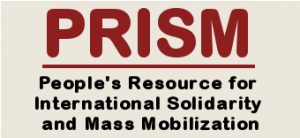
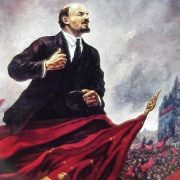
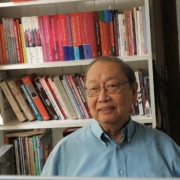
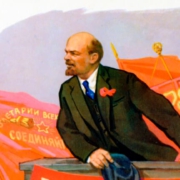
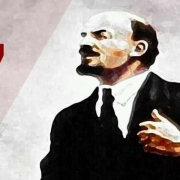


Leave a Reply
Want to join the discussion?Feel free to contribute!